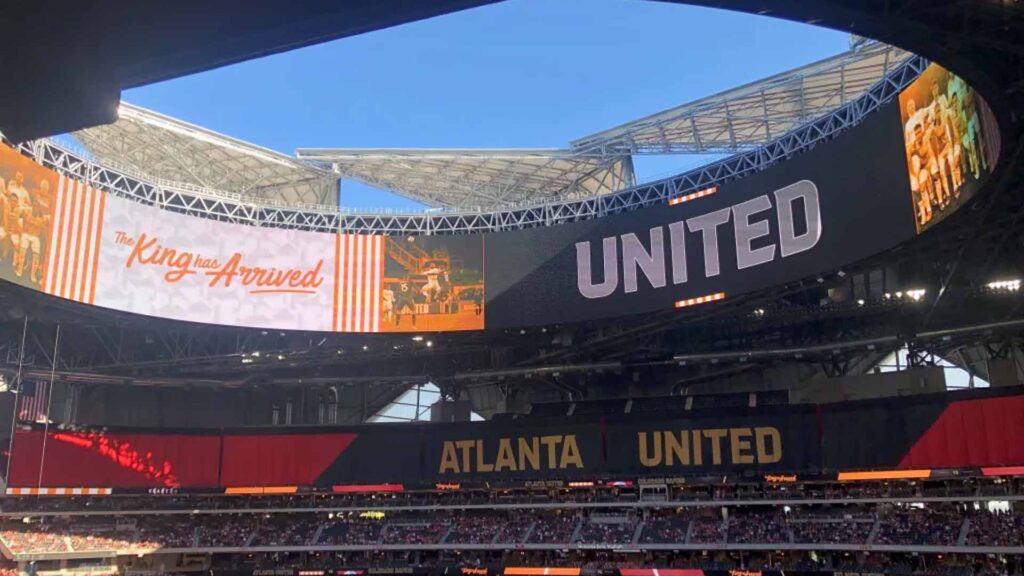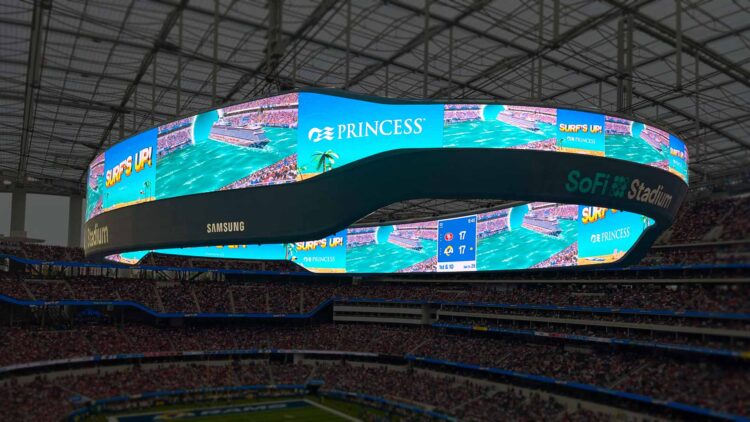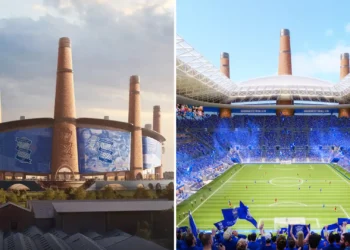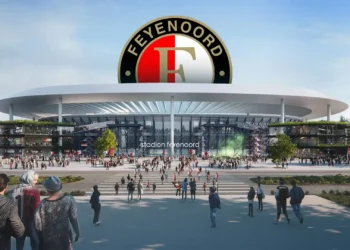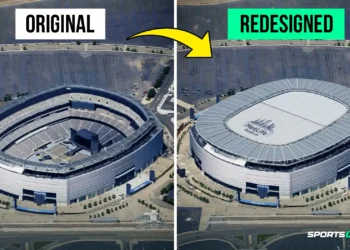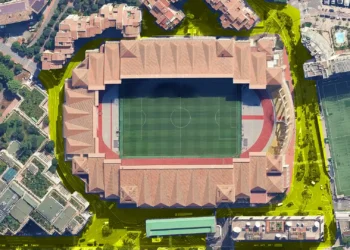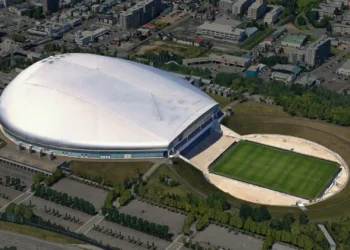In the age of digital transformation, stadiums around the world are using the latest technology to improve the fan experience. Among the most striking innovations are 360-degree video boards, which offer immersive visuals that captivate audiences.
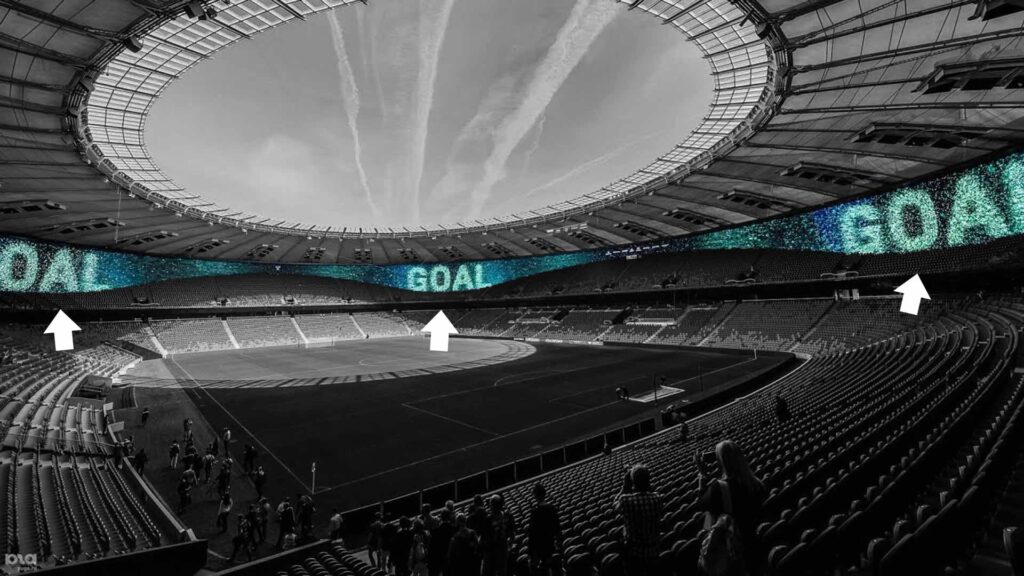
Here, we explore four stadiums that stand out for their incredible 360-degree video boards.
.
SoFi Stadium (70,240)
California, United States.
SoFi Stadium, located in Inglewood, California, is a state-of-the-art sports and entertainment complex that has redefined the fan experience with its innovative design and cutting-edge technology. One of the standout features of this architectural marvel is its 360-degree screen, known as the Oculus, which has set a new benchmark for in-stadium displays.
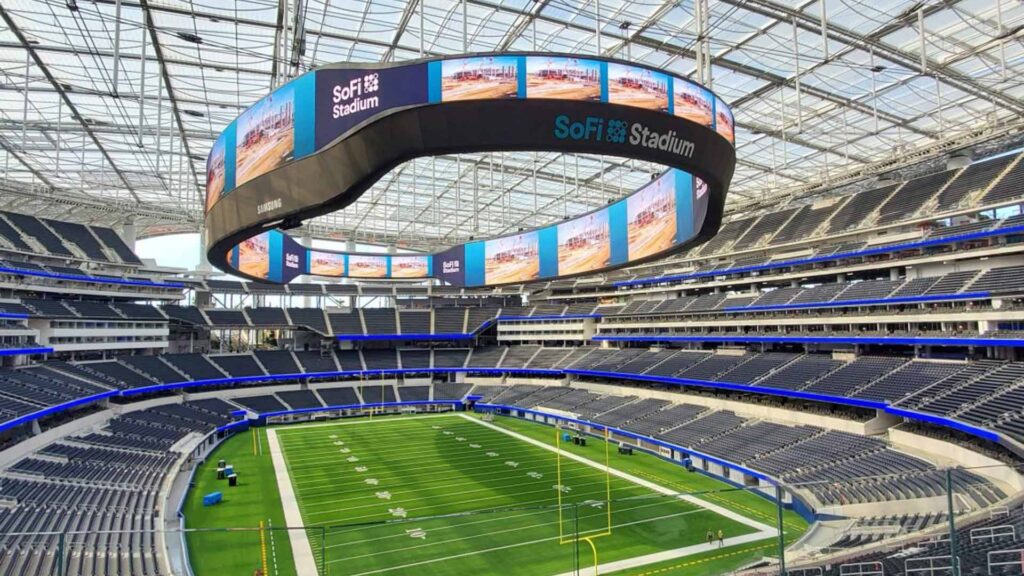
The Oculus: A Visual Spectacle
The Oculus at SoFi Stadium is a double-sided, oval-shaped video board that hangs from the roof over the field. This massive display, which is the largest of its kind in the world, offers a revolutionary way for fans to engage with live events. Measuring approximately 120 yards in length and weighing around 2.2 million pounds, the Oculus is more than just a screen—it’s a dynamic centerpiece that enhances the spectator experience from every angle.
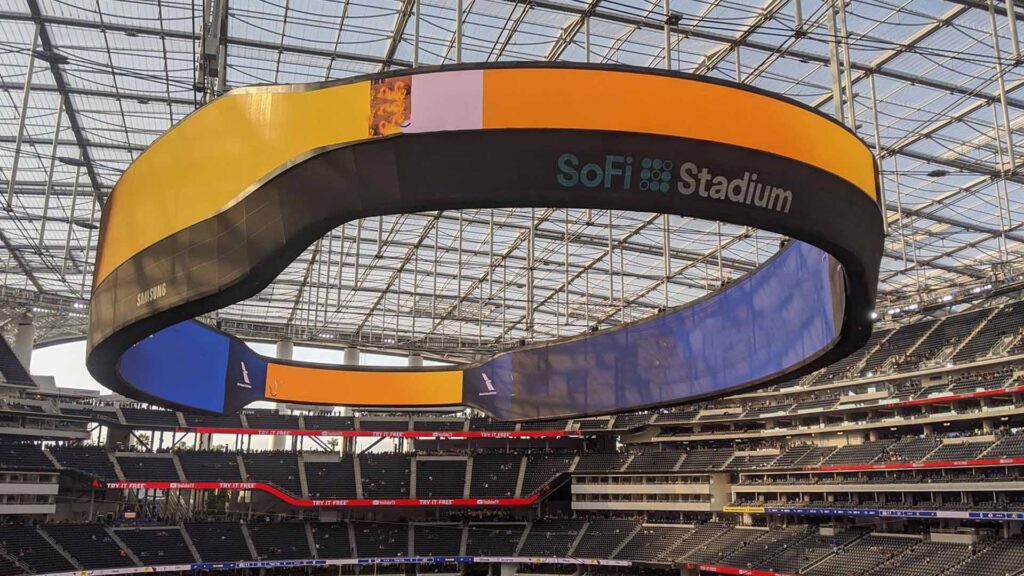
Technical Specifications
The 360-degree screen boasts impressive technical specifications that contribute to its unparalleled visual quality. It features 80 million pixels, ensuring high-resolution imagery that is clear and vibrant from any seat in the stadium. The screen’s dual-sided design allows for different content to be displayed on the inner and outer surfaces simultaneously, providing tailored experiences for fans whether they are seated closer to the field or higher up in the stands.
.
Estadio Santiago Bernabéu (85,000)
Madrid, Spain.
The Santiago Bernabéu Stadium, home to the legendary Real Madrid CF, is undergoing a transformative renovation that includes the installation of a cutting-edge 360-degree screen. This innovative feature aims to enhance the spectator experience, making the historic venue a modern marvel of sports architecture and technology.
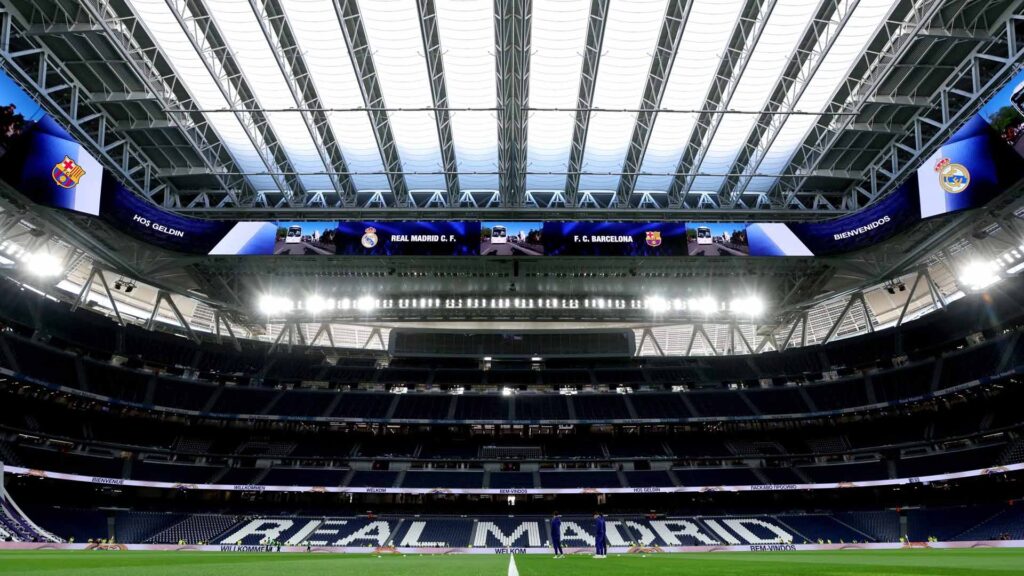
A Landmark of Innovation
The Santiago Bernabéu Stadium has long been a symbol of excellence in football, hosting countless memorable matches and showcasing some of the greatest talents in the sport. With the latest renovations, the stadium is poised to set new standards in fan engagement and entertainment. Central to this transformation is the 360-degree screen, designed to provide an immersive visual experience that captivates fans from every angle.
Technical Specifications and Design
The new 360-degree screen at the Santiago Bernabéu is a testament to technological advancement. Encircling the entire perimeter of the stadium, this massive, continuous LED display ensures that no seat is left out of the action. The screen features ultra-high-definition resolution with millions of pixels, delivering crystal-clear images and vibrant colors that enhance the viewing experience.
The screen’s design allows for seamless integration with the stadium’s architecture, creating a visually stunning and cohesive environment. Its dual-sided nature enables different content to be displayed on the inner and outer surfaces, catering to fans seated at various levels and angles. This versatility ensures that everyone, from the pitch-side seats to the upper tiers, enjoys an unparalleled visual experience.
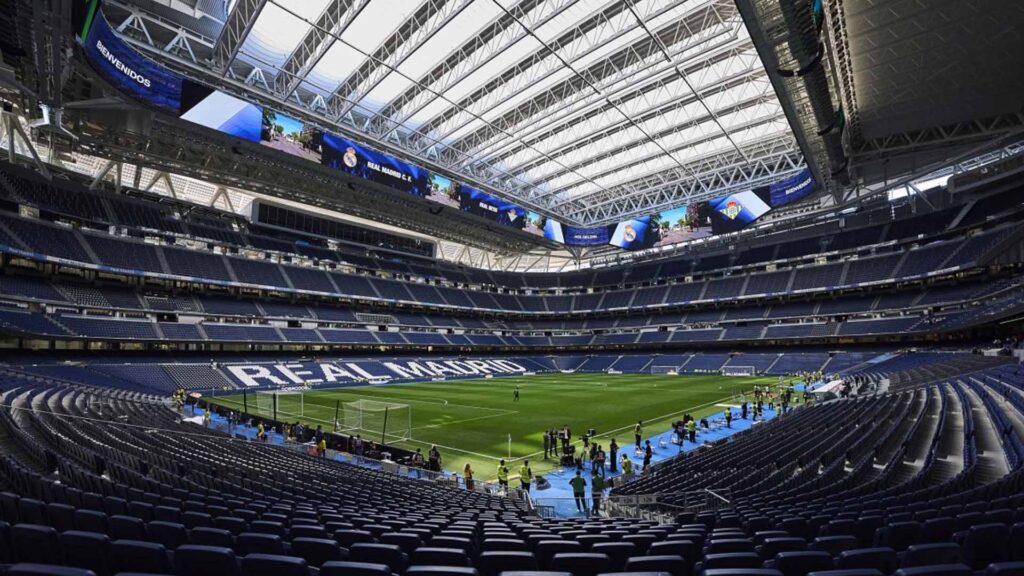
Enhancing the Fan Experience
The 360-degree screen is set to revolutionize the way fans engage with live matches at the Santiago Bernabéu. During games, the screen will display real-time statistics, instant replays, player profiles, and other interactive content. This dynamic presentation keeps fans informed and entertained, adding depth to their understanding of the game.
Moreover, the screen’s immersive nature allows for captivating pre-match and halftime shows, featuring dazzling graphics and animations that heighten the overall atmosphere. For concerts and other events hosted at the stadium, the 360-degree screen provides a spectacular backdrop, enhancing performances with synchronized visuals that create a multisensory experience.
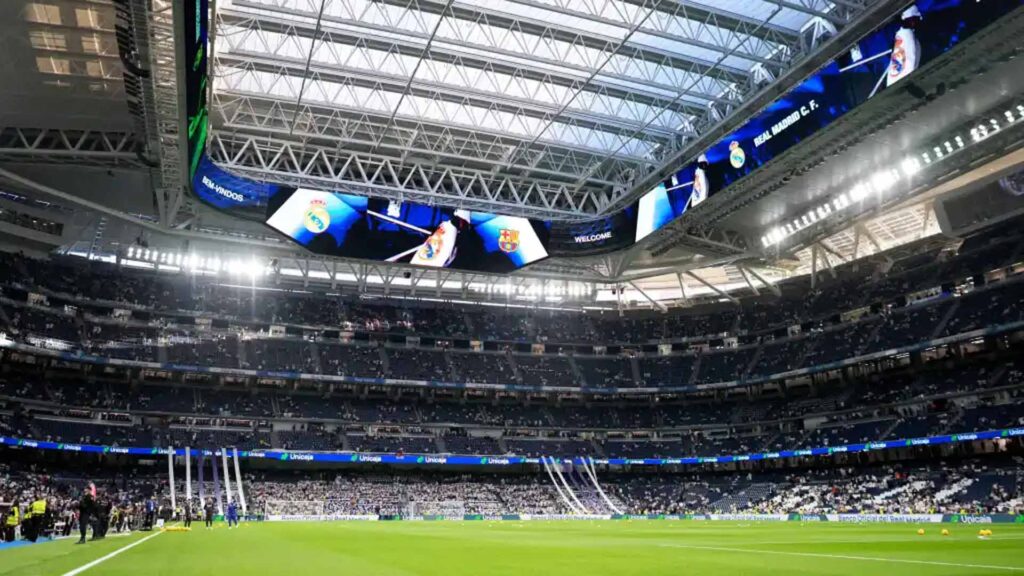
Technological Integration
The installation of the 360-degree screen is part of a broader renovation project that incorporates advanced technology throughout the Santiago Bernabéu Stadium. This includes a retractable roof, upgraded seating, and state-of-the-art facilities designed to provide the ultimate fan experience. The screen itself is integrated with the stadium’s sophisticated audio system, ensuring that visual and auditory elements work in harmony to create a cohesive and immersive environment.
.
Krasnodar Stadium (35,179)
Krasnodar, Russia.
Krasnodar Stadium, home to FC Krasnodar in Russia, stands out not just for its architectural beauty but also for its advanced technological features, including a groundbreaking 360-degree screen. This innovative display has redefined the fan experience, making it one of the most technologically advanced stadiums in the world.
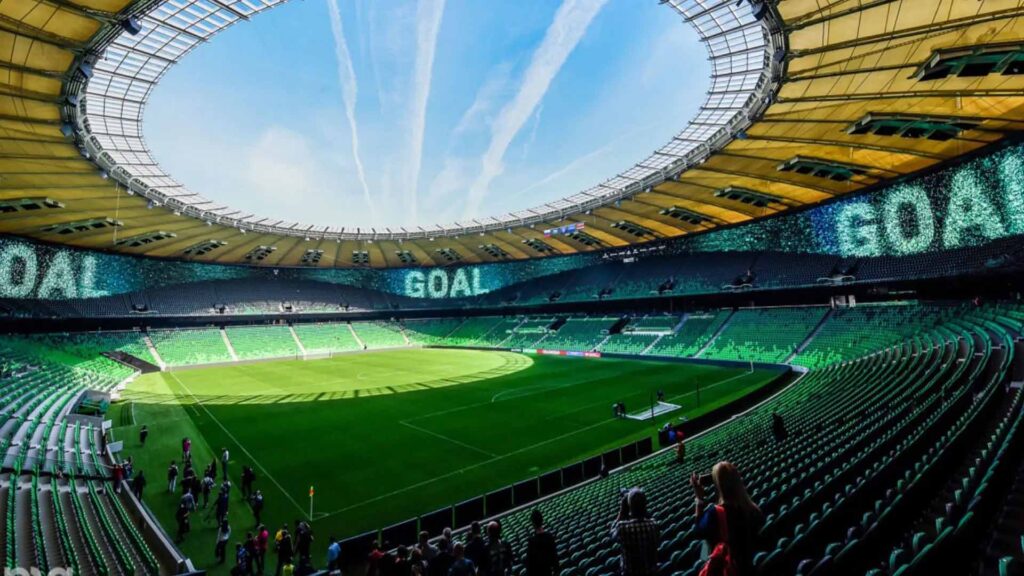
Architectural and Technological Mastery
Krasnodar Stadium, designed by the renowned architect von Gerkan, Marg and Partners (gmp), is known for its sleek, modern design and impressive features. Opened in 2016, the stadium has a seating capacity of 35,074 and offers an intimate and engaging atmosphere for football matches. The centerpiece of its technological advancements is the 360-degree screen, which enhances the visual experience for every spectator.
The 360-Degree Screen: A Visual Revolution
The 360-degree screen at Krasnodar Stadium is a continuous, ring-shaped LED display that encircles the upper tier of the seating area. This massive screen ensures that every fan, regardless of their seat, has an excellent view of the live action, replays, and other dynamic content. The display is particularly striking during night games, where its vibrant colors and high-definition visuals come to life, creating an immersive environment.
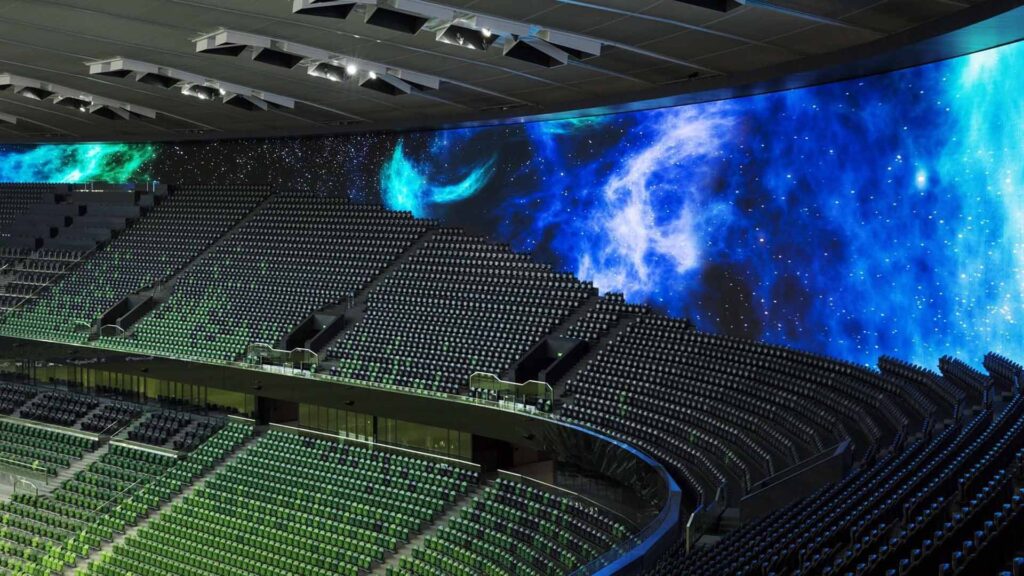
Technical Specifications and Design
The 360-degree screen at Krasnodar Stadium features cutting-edge LED technology, providing ultra-high-definition resolution and vibrant color accuracy. The screen is designed to seamlessly integrate with the stadium’s architecture, offering a sleek and modern look. Its vast surface area allows for a wide range of content to be displayed simultaneously, from real-time game statistics and player information to interactive fan engagement features.
The dual-sided nature of the screen means it can display different content on the inner and outer surfaces, maximizing its utility. This design ensures that all fans, whether seated closer to the pitch or higher up, have an unobstructed and engaging view of the screen.
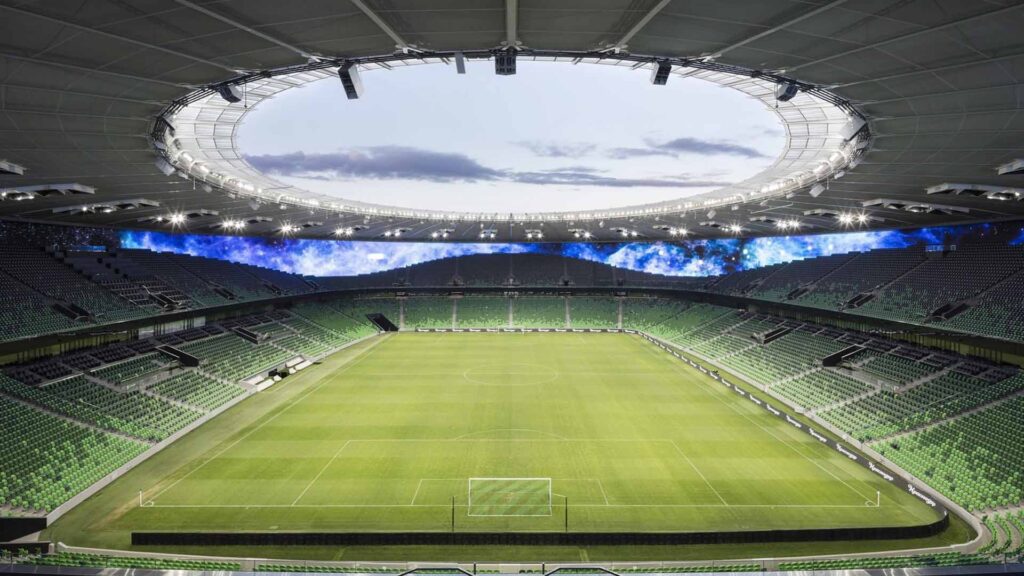
Environmental Considerations
Incorporating modern sustainability practices, the 360-degree screen at Krasnodar Stadium is designed with energy efficiency in mind. The LED technology used in the screen is known for its low power consumption and long lifespan, reducing the environmental impact. Additionally, the stadium itself includes various eco-friendly features, such as energy-efficient lighting and water conservation systems, demonstrating a commitment to sustainability.
.
Mercedes Benz Stadium (75,000)
Atlanta, Georgia, United States.
Mercedes-Benz Stadium in Atlanta, Georgia, home to the NFL’s Atlanta Falcons and MLS’s Atlanta United FC, has redefined the stadium experience with its groundbreaking 360-degree video screen known as the Halo Board. This state-of-the-art display is not only a marvel of modern engineering but also a central feature that enhances the visual and interactive experience for fans.
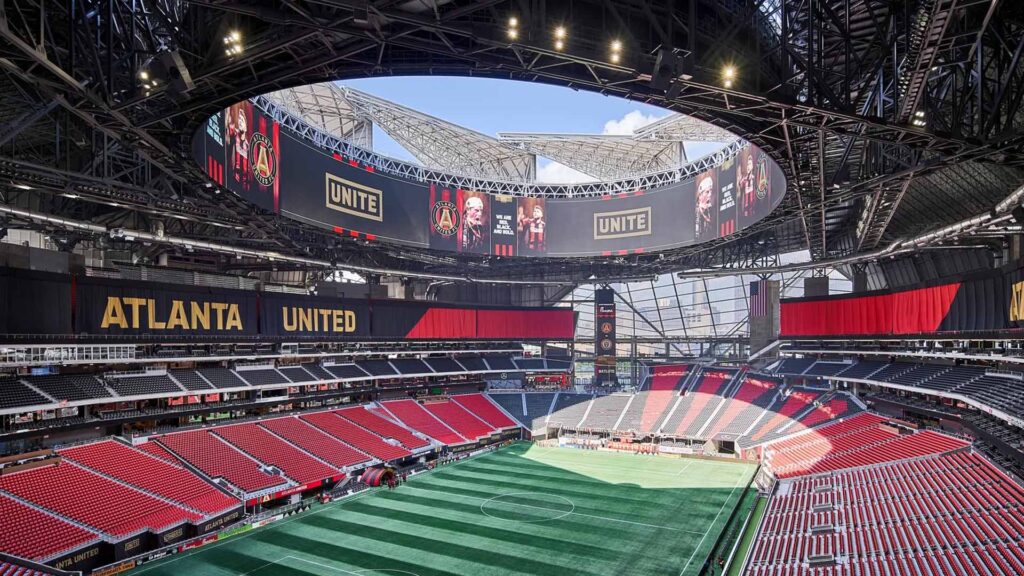
The Halo Board: An Architectural and Technological Masterpiece
The Halo Board at Mercedes-Benz Stadium is an iconic feature that distinguishes it from other stadiums worldwide. Suspended from the roof and encircling the stadium’s opening, the Halo Board provides an uninterrupted, 360-degree view of high-definition content. This innovative design ensures that every seat in the house has a perfect view, making it a focal point of the stadium’s interior.
Technical Specifications and Design
The Halo Board is a monumental structure in both size and capability. It measures 58 feet in height and spans 1,075 feet in circumference, making it one of the largest video boards in the world. This massive display features 63,000 square feet of screen space, equivalent to the size of a football field, and boasts over 37 million LEDs, delivering unparalleled image clarity and brightness.
The board’s oval shape complements the stadium’s retractable roof, which resembles a camera aperture, further enhancing the visual appeal. The Halo Board’s dual-sided design allows for different content to be displayed simultaneously on the inner and outer surfaces, providing a versatile platform for live game action, replays, statistics, and interactive fan content.
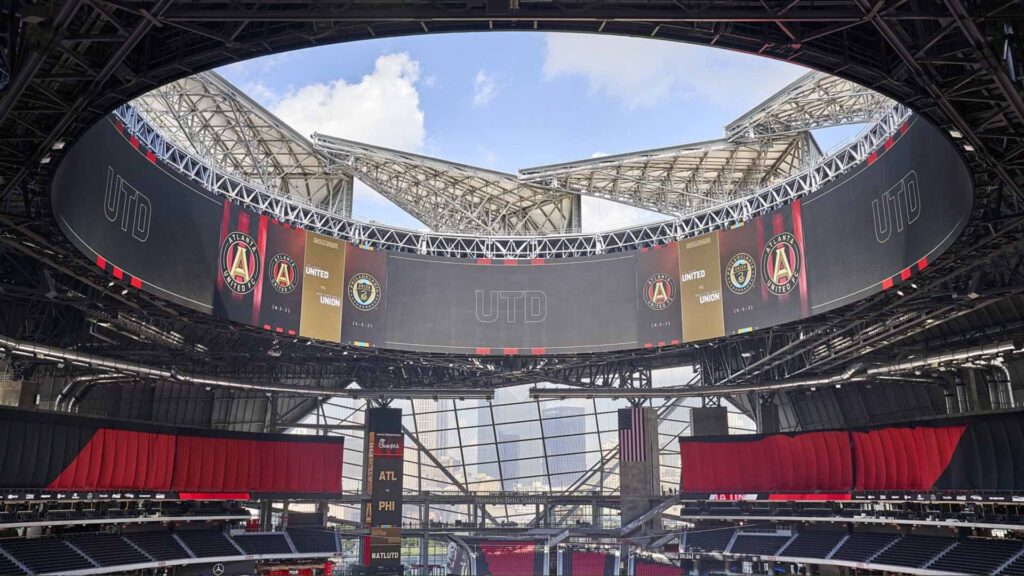
Enhancing the Fan Experience
The Halo Board is designed to elevate the fan experience in multiple ways. During NFL and MLS games, it displays real-time statistics, instant replays, player profiles, and other engaging content, ensuring fans remain connected to every moment of the action. The board’s immense size and high resolution make every play, every tackle, and every goal larger than life, enhancing the excitement and engagement for spectators.
Beyond sports, the Halo Board is a key feature during concerts and other events held at the stadium. Its ability to display high-definition visuals and dynamic animations creates an immersive environment that enhances performances and captivates audiences. The board is also used for pre-game and halftime shows, providing a platform for dazzling graphics and entertainment that add to the overall atmosphere.
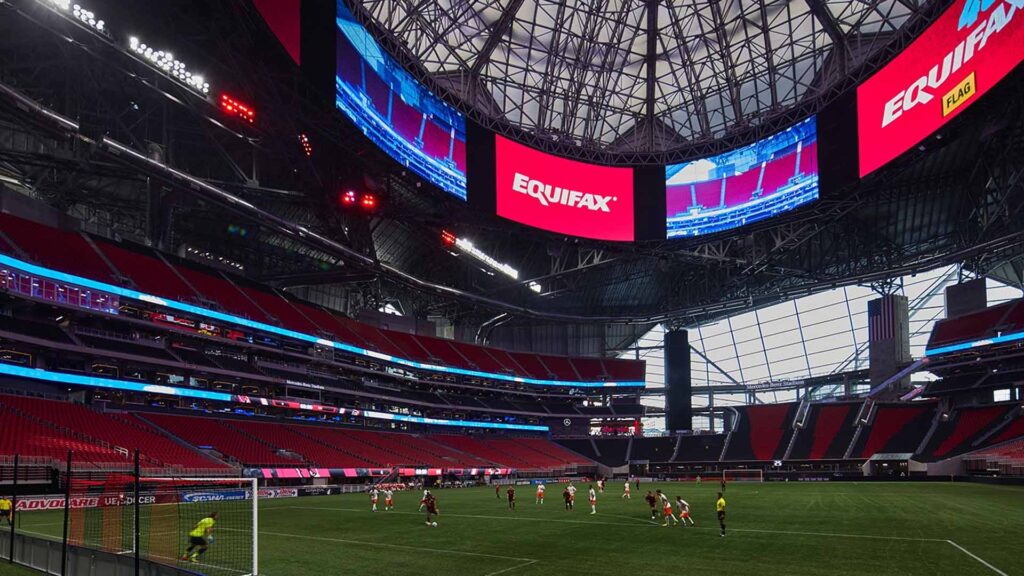
Technological Integration
The Halo Board is part of a comprehensive technological ecosystem at Mercedes-Benz Stadium. Integrated with the stadium’s advanced sound system, the board ensures that both visual and auditory elements are synchronized for a seamless experience. This integration extends to the stadium’s Wi-Fi network and mobile apps, allowing fans to interact with the content displayed on the Halo Board through their devices, participate in polls, and access exclusive in-game features.
Environmental Considerations
Sustainability is a core principle in the design of the Halo Board and Mercedes-Benz Stadium as a whole. The LED technology used in the board is energy-efficient, reducing power consumption without compromising on brightness or clarity. The stadium itself is LEED Platinum certified, incorporating numerous eco-friendly features such as rainwater harvesting, solar panels, and energy-efficient lighting, reflecting a commitment to environmental responsibility.
